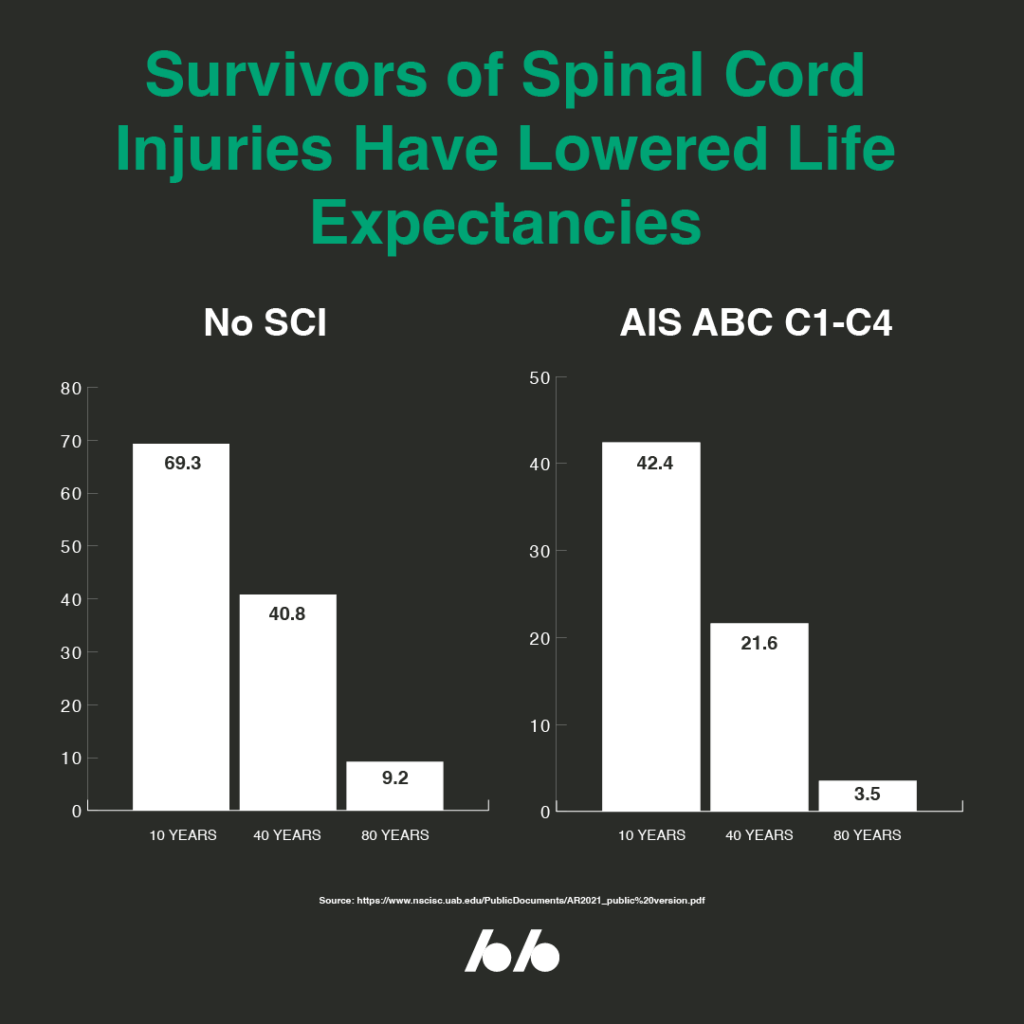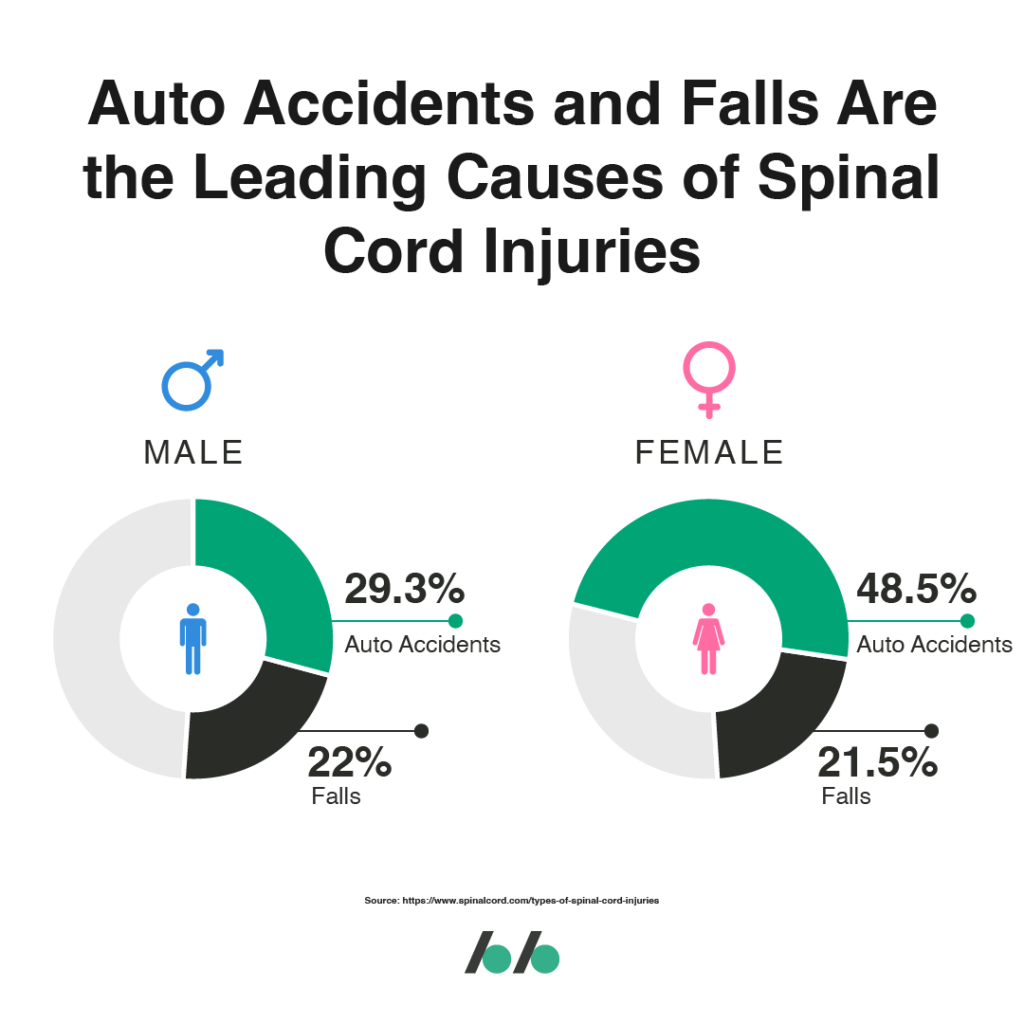Your spinal cord is a vital part of your body. It connects your brain to your legs, arms, and other parts of your body. Without it, you lose the ability to move voluntarily. As a result, the body becomes increasingly vulnerable to injury and complications. If you’d like to learn more about spinal cord injury, its types, and causes, this guide is the perfect resource.
However, knowing the different spinal cord injury types or why they happen is not enough. You also need to know when and where to turn in the event of a spinal cord or brain injury.
With over 100 years of combined legal experience, the Top’s Injury Law Group lawyers are experts in the field of personal injury involving the central nervous system. We know from experience that the effects of a spinal cord injury can be devastating. That’s why we want to help victims get justice. Our aim is to ensure that victims receive fair compensation for the harm they have suffered.
If you have any questions about the legal options related to your accident, or if you need an experienced attorney to build a strong case, do not hesitate to call us at (480) 470-2299. Our bilingual team is available 24/7 to answer your questions. You can also submit your inquiry online.

The first step in understanding spinal cord injuries is knowing how doctors generally distinguish them into two categories: complete and incomplete. A complete spinal cord injury is one that completely stops the brain from being able to communicate with the body parts located below the injury. In comparison, an incomplete spinal cord injury damages the connection between the brain and other areas of the body’s nervous system. The result is a potential spectrum of wide-ranging effects that reduce your sensory and motor function.
Spinal cord injuries are either complete or incomplete, and doctors further classify them based on their location.
According to the National Cancer Institute, the spinal cord connects the brain to nerves in most parts of the body. It allows the brain to send messages to the rest of the body. The brain and spinal cord make up the central nervous system (CNS).
The most common types of spinal cord injury get their names based on where the injury occurs (i.e., complete or incomplete). Here are some important facts about spinal cord injury name types and what they mean:
Spinal injuries are most common in the upper part of the back, specifically the cervical and thoracic regions (i.e., C1-T12).
The most noticeable spinal cord injury symptoms are paralysis or loss of sensation in parts of the body below the injury area.
Many different symptoms can point to a possible spinal cord injury, with some being more apparent than others. Amongst others, the spinal cord injury symptoms could include:
Determining the severity of a spinal cord injury will require professional evaluation from a physician. It is recommended to find the best spinal cord injury rehabilitation centers in Arizona. They will likely perform a combination of clinical observation testing (e.g., pain, sensory and movement ability, etc.) along with imaging to see the spine internally (e.g., x-rays, MRIs, etc.).
The ASIA or ISCOS Impairment Scale is the spinal cord injury guide for classifying the severity of a person’s injury and monitoring its progression or regression. Thus, the scale classifies spinal cord injuries into five grades, ranging from Grade A to Grade E, with Grade A being the most severe. The meaning behind each grade is as follows:
No treatment exists to fully recover from a spinal cord injury by reversing the initial damage. Instead, treatment activities center around proactively preventing further injury to the spinal cord and helping people learn to cope with their SCI. This is done by strengthening unaffected body areas and other rehabilitation exercises.
Secondary complications like osteoporosis and pneumonia can make life especially difficult for a spinal cord injury survivor.

Secondary complications are common with spinal cord injuries because of their impact on a vital bodily function—transmitting information to and from the brain to the rest of the body. Some of these complications could include:
How does a spinal cord injury affect the brain? The physical connection between your brain and spine means a link between TBI and spinal cord injuries can exist. Depending on the source of the trauma, it’s possible to have both a brain and spinal cord injury. Especially, where the two parts of the body meet at the neck area. At the very least, you may have an overlap in symptoms with a TBI and a spinal cord injury, such as headaches or changes in mood.
Some of the most common causes of spinal cord injury are the types of activities you would normally expect to cause injury. A spinal cord injury from a car accident is one of the most common causes. However, others often involve heavy equipment and a lack of protection that makes you vulnerable to injury. For example:
As explained above, a spinal cord injury from an accident can result in a broad range of complications. Paralysis and loss of feeling can make it extremely difficult, if not impossible, to return to life as it were before. You may have a permanent disability that removes you from your chosen career, keeps you from your favorite activities, jeopardizes your independence, and impacts your family. Depending on the nature of the accident, you may have legal claims against those responsible for your spinal cord injury because of their negligence or other wrongful actions.

As we show you in this spinal cord injury guide, SCI often has a permanent negative effect on your quality of life. As mentioned, recovery options are about learning to cope with your body’s new condition, and no treatment exists to return your body to the state it was in before the spinal cord injury.
An attorney can be an essential resource in pursuing financial compensation from those responsible for your spinal cord injury. They take the burden of managing your case, so you can focus on your rehabilitation and adjusting your life after the accident. Amongst other key functions, a spinal cord injury lawyer can help in the following ways:
Spinal cord injuries are serious ailments that affect quality of life and may qualify for compensation.
Our personal injury law firm is dedicated to helping accident victims. Particularly those who have suffered different types of spinal cord injury. We believe in bringing attention to detail and preparation when representing our clients. These attributes allow us to take an aggressive litigation approach that aims to obtain the maximum compensation for our clients.
Schedule a free consultation with one of our Arizona spinal cord injury lawyers today. Call (480) 470-2299 to discuss the legal options for your case.